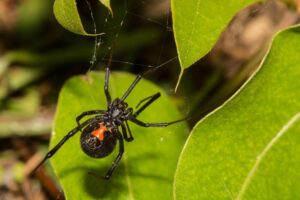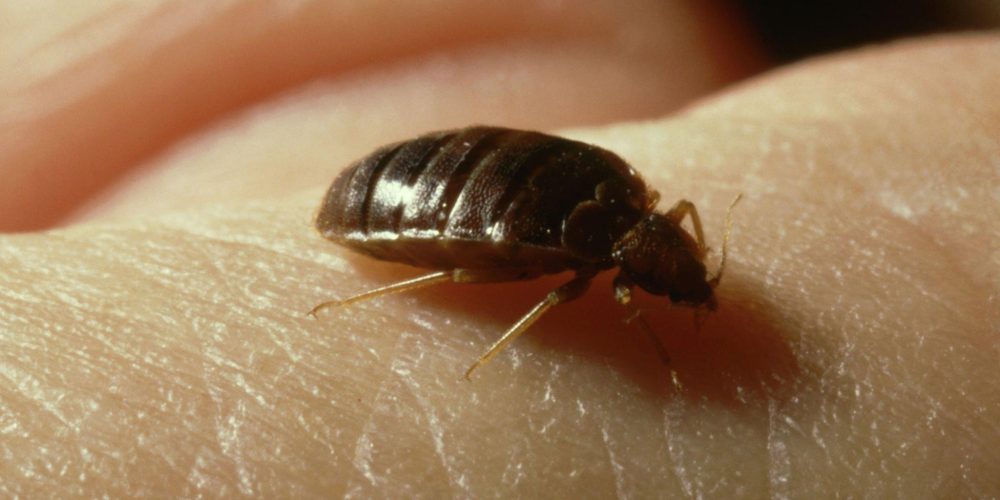Beautiful but deadly, the iconic black widow is a notoriously famous spider. Oftentimes, people pitch the black widow spider against the tarantula because these two species are well-known worldwide. However, their fame is not of the kind most would desire; it is rooted in fear and death. I know you’re eager for answers to questions such as, “Is the bite of a black widow truly fatal?” “Do female black widows genuinely eat their mates?” “What are the symptoms to watch for if a person is bitten by a black widow?” In this post, we will provide answers to these questions and more.
The term “black widow” primarily refers to any of three species of Latrodectus, including the Northern Black Widow, the Eastern Black Widow, and the Western Black Widow. However, the name “black widow” is often used generically to refer to other spider species belonging to the same family, which includes a total of 32 spider species. Black widows have a distinctive physical appearance. Adult females are usually shiny black with a bright red hourglass shape underneath their often large and spherical abdomen. Some may appear lighter in color and, at times, even brown. Females are typically more brightly colored, while males are lighter with red or pink spots on the upper side of their abdomen.
Natural Habitat and Size
The distinct characteristics of black widows extend to differences in gender size and weight. Black widows can measure up to 1.5 inches (about 4 cm) in length, including their leg span, with a diameter of about 0.25 inches (7 millimeters). Females are generally twice the size of males. These spiders can be found in temperate regions worldwide, including Africa, Asia, Australia, Southern Europe, the United States, and South America. In the United States, they are present in most states. The black widow holds the distinction of being North America’s most venomous spider. They are often found in dark or undisturbed areas such as barns, under desks and tables, basements, holes created by other animals, garages, woodpiles, dense vegetation, and hollow stumps.
Lifespan
You might be surprised to learn that the lifespan of a male black widow is incredibly short! In the wild, female black widow spiders live to be between 1 to 3 years old, while males only live for 1 to 2 months. The life cycle of a black widow spider begins with the female laying 200 to 750 eggs, which she wraps in a cocoon. These eggs hatch about 20 days later, producing hundreds of spiderlings that are typically whitish in color (both males and females). As they mature, their color gradually darkens until they become shiny black or brown. Once hatched, the spiderlings disperse in search of their own food and territory.
Reproduction
Before a female can lay her eggs, she must engage in the famous mating ritual that gave her the name “Black Widow.” Black widows are solitary spiders, and the males can easily locate females by following the chemical trail they leave behind. Upon reaching the female, males often assess the risk of mating with her. Males prefer to mate with female black widows that have recently eaten, which they can determine by examining the chemical scent on her spun webs. After mating, the male black widow must make a swift exit, or he may become his mate’s next meal!
The black widow’s tendency to engage in post-coital cannibalism, where the female eats her mate after mating, is what earned this spider its ominous name. While it is true that female black widows occasionally consume their mates, it is not very common in the wild, unlike in captivity. In natural settings, there is plenty of room for the male to escape, but in captivity, escape can be challenging for him. Most recorded cases of sexual cannibalism attributed to black widows occur in captivity.
However, it’s worth noting that the black widow is not the only spider species known to exhibit this behavior; some other spiders, such as tarantulas, also engage in post-mating cannibalism. Nevertheless, the name “black widow” is undeniably fitting! The tendency of female black widows to consume their mates after mating is a significant reason why male black widows rarely survive long and are seldom seen in the wild.
Prey
Apart from occasionally snacking on male black widows, what else do they eat? Black widows construct large webs as snares to capture their prey, hanging upside down from the web. This position makes their bright red markings visible to potential prey, which is attracted by the bright color. The web captures insects like grasshoppers, beetles, mosquitoes, caterpillars, and flies. Once ensnared, the spider bites its prey with venom and waits for the venom to take effect. The spider then wraps the prey in a cocoon of webs before injecting it with digestive enzymes that liquefy the prey. The spider can then consume the liquified prey by sucking it.
Natural Predators
Given that black widows are venomous, they have very few natural predators. Their venom makes them dangerous to bite, and their toxicity makes them inedible to other animals. The bright red markings serve as a clear warning sign to potential predators to stay away from black widows. Most animals heed this warning and avoid black widows, except for three exceptions: praying mantises, blue mud wasps, and alligator lizards. These three creatures find black widows to be a tasty treat that doesn’t upset their digestive systems. Additionally, humans pose a threat to black widows, either accidentally or intentionally, causing their demise.
Symptoms of a Black Widow bite
Black widow spiders are not considered an endangered species and are not listed on the International Union for Conservation of Nature’s red list. While black widow venom is reputed to be 15 times more potent than that of a rattlesnake, most bites from this spider are rarely fatal. A single bite can cause symptoms such as muscle spasms, difficulty breathing due to diaphragm paralysis, nausea/vomiting, excessive sweating, tremors, abdominal pain, and rashes, among others.
Children, the sick, and the elderly are particularly at risk of fatality if bitten by a black widow. One reason black widow bites are seldom fatal unless you fall into one of the aforementioned categories is that the spider rarely injects a lethal dose into humans. Its venom is typically reserved for prey much smaller than humans, and it generally only bites when it feels threatened. Nevertheless, it is essential to seek immediate medical attention from professionals after a black widow bite to be on the safe side.
The black widow is indeed a legendary creature: aesthetically captivating yet deadly to interact with. While it occasionally lives up to its name as a sexual cannibal, this behavior is rare in the wild, as males typically make a hasty retreat. If you’re fearful of rattlesnakes, then this spider should concern you 15 times more. So, please exercise caution when exploring basements, garages, undisturbed or dark places, and the other locations mentioned earlier.














